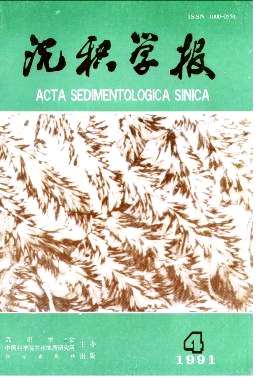Generation Mechanism of Secondary Porosity and Control Factors in Deep Sandstone Hydrocarbon Reservoirs, Northern Songliao Basin
- Received Date: 1989-12-01
- Publish Date: 1991-12-10
Abstract: Songliao Basin formed by rifting in craton interior during the Yanshan Movement of Late Jurassic. The deep stratigraphy of Songliao Basin includes the Upper Jurassic (J2-3) and the Lower Cretaceous formations (K1d K1q1-2). The succession consisting mainly of sandstone, shale and coal-bearing sequence and partially volcanics, volcaniclastic rocks were established during the rifting and the early depression stage. The clastic sequence displays terrestrial alluvial fan, fan delta, fluvial floodplane and lacustrine sedimentary facies. The sandstone reservoirs are mineralogically characterized by immature feldspathic litharenite and lithic arkose and have been altered by a series of diagenetic alteration. The secondary dissolution pores are frequently found as the dominant type of porosity including framework dissolution porosity, intergranular dissolution enhanced porosity and authigenetic laumontite dissolution porosity. This paper describes the dissolution mechanism and its control factors. The effect of organic acids on dissolution of aluminosilicate is closely taken into account since many information of organic-inorganic interaction and sandstone porosity enhancement have been demonstrated in recent years. 1. The generation mechanism of framework grain dissolution porosity and intergranular dissolution enhanced porosity. Two types of mechanism are suggested based on the distribution and association of these dissolution pores. One is related to the telogenetic percolating meteoric water in correspondence with the sedimentary hiatus during the end of K,d stage. As the result, porosity are largely by combinning the intergranular dissolution enhanced porosity and detrital grain dissolution porosity. The generation mechanism of framework grain dissolution porosity could be basically contributed to the maturation of type Ⅲ kerogen in the Jurassic coal-bearing sequence. Carbonic acid and short-chain aliphatic acid effectively provides H+ and Al-complexing agent to the pore solution. Thus this type of dissolution is obviously influenced by the organic matter content in the shale, type of kerogen and the shale to sand ratio. 2. Dissolution mechanism of authigenetic laumontite. Unstable laumontite could be easily dissolved under the condition of lower pH value, high maturation of organic material and the thermal degration of hydrocarbon during the progressive burial of sediments. It could be concluded that the generation of the secondary pores closely related to sedimentary hiatus(or unconformity) and maturation of organic matter. To understand the generation mechanism and control factors of dissolution porosity would allow us to make a regional evaluation of reservoirs.
| Citation: | Yang Baoxing, Li Nanhao, Gu Hongsheng. Generation Mechanism of Secondary Porosity and Control Factors in Deep Sandstone Hydrocarbon Reservoirs, Northern Songliao Basin[J]. Acta Sedimentologica Sinica, 1991, 9(4): 34-42. |






 DownLoad:
DownLoad: